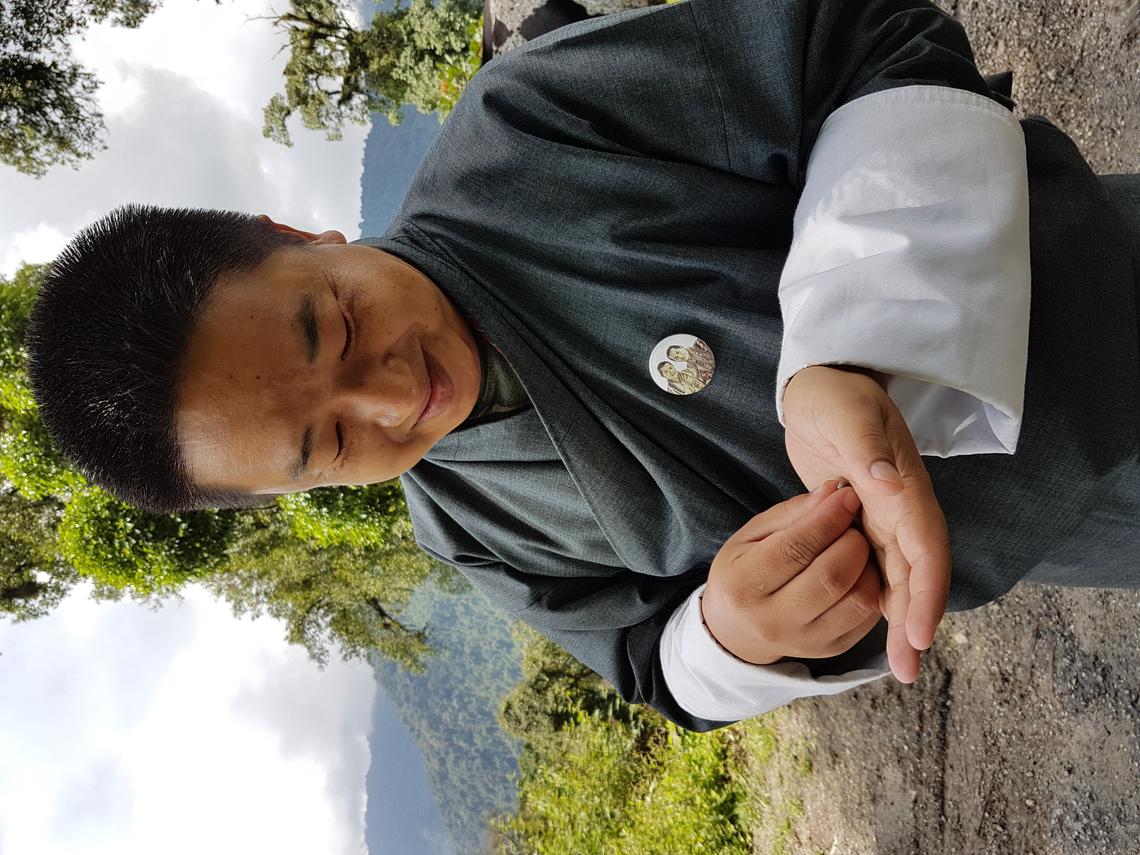March 16, 2021
Vet Med grad student conducts first-ever study on disease-carrying ticks in Bhutan

For outdoorsy Canadians, or even those with big trees in their yards, the prospect of discovering a tick on themselves or their pets, after spending time outside in the summer, can be a constant anxiety.
In Canada, an undiscovered infected deer tick could lead to the contraction of Lyme disease. But around the world, there are thousands of tick species, many of which can carry a variety of diseases harmful to both humans and animals. In many countries the diseases those ticks carry create devastating impacts for livestock and the people who depend on them for their food and livelihoods.
Bhutan, a small Himalayan kingdom located between China and India, is one of those places.
“Ticks are a big problem for farming communities here,” says Dr. Jamyang Namgyal, BVSc & AH, MSc, a senior veterinary officer with the Royal Government of Bhutan, who recently earned a master's degree at UCalgary’s Faculty of Veterinary Medicine (UCVM). “In 2019 alone, 89 per cent of parasitic cases were linked to ticks, and 42 per cent of the country’s cattle population was treated for tick infestations.”
New research to identify solutions
Despite the terrible impact tick infestations are having on Bhutan’s farming communities, no comprehensive studies had been conducted to identify potential solutions. That all changed when Namgyal published the first-ever study on the issue.

Jamyang Namgyal holds a tick collected as part of his research.
Susan Cork
The paper is the result of recently completed research, conducted under the supervision of Dr. Susan Cork, PhD, a professor in UCVM’s department of ecosystem and public health.
“Dr. Namgyal’s MSc research program is one of the recent success stories for UCVM’s internationalization program,” says Cork. “We received funding to support Dr. Namgyal’s work from UCalgary International and from the One Health Scholarship Fund. It engaged a broad supervisory team including colleagues from the Royal Government of Bhutan, the Public Health Agency Canada (PHAC), and Agriculture and Agri-Food Canada (AAFC), as well as academics within Canada and Bhutan.”
Creating a new foundation for tick control
Namgyal says there were three important outcomes from his research: They were able to determine the presence, diversity, and prevalence of infestation of tick species in two districts of eastern Bhutan. That data was then used to model the distribution of those tick species throughout the rest of the region.
Finally, his team conducted a knowledge, attitude, and practices survey in one of the most prominent dairy farming areas of eastern Bhutan. Doing this, he says enabled them to create awareness programs on ticks and tick-borne diseases for farmers.
“The outcomes of this study provided us with the information we need to initiate a targeted tick control program,” Namgyal says. “And to plan tick surveillance, and subsequent prevention and control programs for tick-borne diseases for cattle.”
A success story for Bhutan and UCalgary
“Through his MSc research program, Jamyang also had the opportunity to work with a wide range of experts both in Canada and Bhutan,” says Cork. “He has since been able to collaborate with colleagues from PHAC and AAFC to model the habitat suitability of Haemaphysalis longicornis (the Asian long horned tick) and its potential expansion in North America.”
Cork says Bhutan is recognized as a leader in implementing a One Health approach to tackle emerging human, animal, and environmental health issues. She says along with being an ambassador for Bhutan’s work in this area, Namgyal is also an ambassador for the incredible work being done at UCalgary to advance this transdisciplinary approach to address problems at the intersection of people, animals, and their environments.




